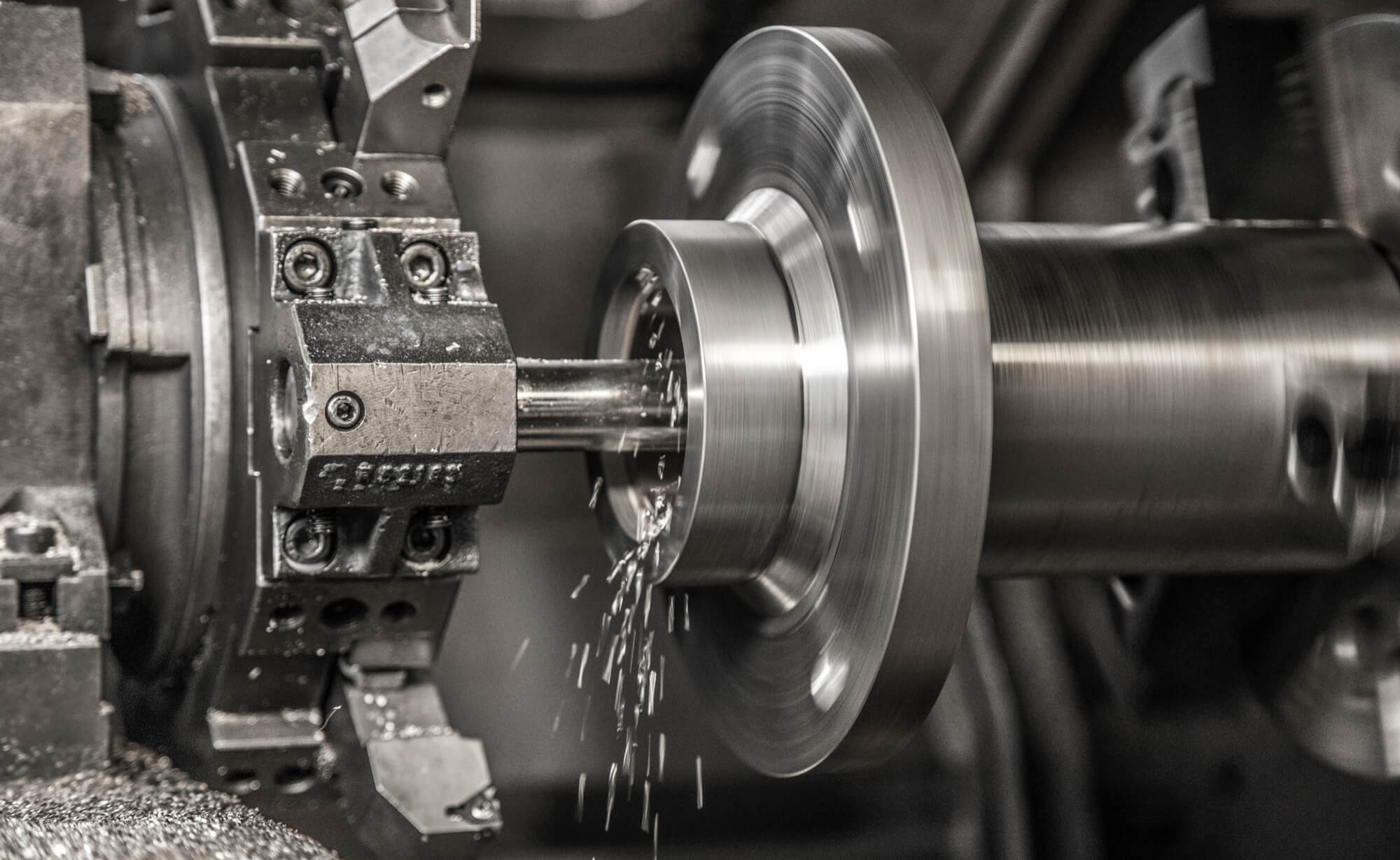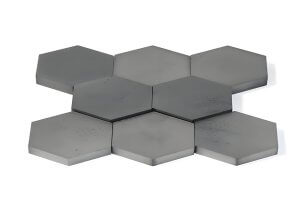Introduction
High-manganese steel is renowned for its exceptional wear resistance and toughness, making it an ideal choice for producing durable flanges. However, its high strength and toughness also present significant challenges in CNC machining. For buyers looking to procure flanges made from high-manganese steel, understanding the intricacies of machining this material is crucial for ensuring high-quality, cost-effective production. This article will provide an in-depth guide to cutting high-manganese steel in CNC machining, focusing on tool selection, machining parameters, and practical tips to optimize the process.
Understanding High-Manganese Steel
High-manganese steel, often referred to as Hadfield steel, contains 11-18% manganese, making it incredibly tough and resistant to wear. This material is commonly used in industries where components are subjected to heavy impact and abrasion, such as in the production of flanges for heavy-duty applications.
The key properties of high-manganese steel include:
- High Wear Resistance: Due to the formation of a hard surface layer when subjected to impact or pressure.
- High Toughness: Despite its hardness, the material retains excellent toughness, making it resistant to cracking under stress.
- Work Hardening: The steel hardens under impact, which enhances its wear resistance but complicates machining.
These properties make high-manganese steel an excellent choice for flanges used in demanding environments, but they also create challenges during CNC machining, particularly due to the material’s tendency to harden rapidly during cutting.
Challenges in CNC Machining of High-Manganese Steel
- Work Hardening: The primary challenge in machining high-manganese steel is its tendency to work harden rapidly. This means that the surface layer of the material hardens when subjected to cutting forces, making subsequent passes more difficult and increasing tool wear.
- High Cutting Forces: The high strength of high-manganese steel requires significant cutting forces, which can lead to tool deflection and reduced dimensional accuracy.
- Heat Generation: Due to its poor thermal conductivity, high-manganese steel retains heat in the cutting zone, leading to high temperatures that can cause rapid tool wear and affect the surface finish of the machined part.
- Difficult Chip Formation: The material’s toughness leads to the formation of long, continuous chips that are difficult to break, complicating chip management and potentially damaging the workpiece or tool.
Tool Selection for Cutting High-Manganese Steel
Selecting the right tools is critical when machining high-manganese steel. The following are key considerations:
- Tool Material:
- Carbide Tools: Tools made from carbide are preferred due to their high hardness and resistance to wear. Carbide tools with added elements like tantalum carbide (TaC) or niobium carbide (NbC) are particularly effective in handling the high cutting forces and temperatures associated with high-manganese steel.
- Coated Tools: Using coated carbide tools can further enhance tool life. Coatings such as titanium nitride (TiN) or titanium aluminum nitride (TiAlN) provide additional resistance to heat and wear.
- Ceramic Tools: For roughing operations, ceramic tools are an excellent choice due to their high temperature resistance. However, they are more brittle and should be used with caution to avoid chipping.
- Tool Geometry:
- Positive Rake Angle: A positive rake angle helps reduce cutting forces and the tendency for work hardening.
- Sharp Cutting Edges: Tools should have sharp cutting edges to minimize the amount of heat generated during cutting, which can exacerbate work hardening.
- Large Clearance Angles: These help reduce friction and heat buildup, extending tool life.
- Tool Holders:
- Rigid Tool Holders: Given the high forces involved, rigid tool holders are necessary to minimize tool deflection and maintain dimensional accuracy.
Recommended Machining Parameters
Optimizing machining parameters is essential for successful CNC machining of high-manganese steel. The following recommendations can help in setting the right parameters:
- Cutting Speed:
- For carbide tools, a cutting speed of 20-40 m/min is recommended.
- For ceramic tools, the speed can be increased to 50-80 m/min.
- Feed Rate:
- A higher feed rate (0.3-0.6 mm/rev) is advisable to ensure that the cutting edge penetrates beyond the work-hardened layer, reducing the impact on tool life.
- Depth of Cut:
- The depth of cut should be sufficient to penetrate the work-hardened layer, typically in the range of 0.3-5 mm.
- Coolant Use:
- Coolant is essential in machining high-manganese steel to control the high temperatures generated during cutting. A high-pressure coolant system can help to flush away chips and cool the cutting zone effectively.
Practical Tips for CNC Machining of High-Manganese Steel
- Preheat Treatment: Applying a preheat treatment to high-manganese steel can reduce its tendency to work harden during machining. Heating the material to 600-650°C followed by slow cooling can transform the austenitic structure into a more machinable form.
- Use of Interrupted Cuts: Interrupted cutting operations can help break up the cutting forces, reducing the risk of work hardening and tool wear.
- Regular Tool Inspections: Due to the high wear rates, tools should be inspected regularly during machining. Replacing tools before they become too dull is critical to maintaining part quality and preventing excessive work hardening.
- Specialized Tooling: For drilling operations, using specialized tools such as solid carbide drills with reinforced cutting edges can help manage the high cutting forces and improve tool life.
Table 1: Tool Materials for High-Manganese Steel Machining
| Tool Material | Application | Advantages | Disadvantages |
|---|---|---|---|
| Carbide with TaC or NbC | General machining | High wear resistance, handles high forces | Requires precise setup |
| Coated Carbide (TiN, TiAlN) | High-speed machining | Enhanced heat resistance, longer tool life | Higher cost |
| Ceramic | Roughing operations | Excellent heat resistance | Brittle, risk of chipping |
| High-Speed Steel (HSS) | Drilling, tapping | Good toughness, lower cost | Shorter tool life, slower cutting speeds |
Table 2: Recommended Machining Parameters for High-Manganese Steel
| Operation Type | Tool Material | Cutting Speed (m/min) | Feed Rate (mm/rev) | Depth of Cut (mm) | Coolant Recommendation |
|---|---|---|---|---|---|
| Turning (Roughing) | Carbide | 20-30 | 0.3-0.5 | 2-4 | High-pressure coolant system |
| Turning (Finishing) | Carbide | 30-40 | 0.2-0.3 | 0.5-1 | High-pressure coolant system |
| Drilling | HSS | 6-10 | 0.1-0.3 | Full drill diameter | Flood coolant |
| Milling (Roughing) | Ceramic | 50-70 | 0.4-0.6 | 2-5 | Minimum Quantity Lubrication (MQL) |
| Milling (Finishing) | Coated Carbide | 40-60 | 0.2-0.4 | 0.5-2 | High-pressure coolant system |
Selecting a supplier with expertise in machining high-manganese steel is crucial. When evaluating suppliers, consider the following:
- Experience with High-Manganese Steel: Ensure the supplier has a proven track record in machining high-manganese steel, particularly for producing flanges.
- Advanced Equipment: The supplier should have advanced CNC machining equipment capable of handling the challenges posed by high-manganese steel, including high-pressure coolant systems and rigid tooling setups.
- Quality Assurance: The supplier should implement rigorous quality control measures, including regular tool inspections and precision measurement tools, to ensure the final product meets your specifications.
- Customization Capabilities: Depending on your specific needs, the supplier should be able to customize the machining process, such as adjusting tool geometries and machining parameters, to optimize production efficiency and part quality.
Mastering the production of flanges made from high-manganese steel requires a deep understanding of the material’s unique properties and the challenges it presents in CNC machining. By selecting the right tools, optimizing machining parameters, and working with an experienced supplier, you can achieve high-quality, durable flanges that meet the demands of even the most challenging applications. As the demand for durable components in industries like mining and construction grows, having a solid understanding of how to machine high-manganese steel will position you for success in the marketplace.
Other Articles You Might Enjoy
- What Material Properties Need to Be Considered When CNC Machining Stainless Steel Flanges?
The CNC machining of stainless steel flanges requires a profound understanding of the material's properties to ensure high-quality, precision outcomes. This article delves into the critical material properties that impact…
- Conquering High-Strength and Ultra-High-Strength Steel in CNC Machining Precision and Techniques Revealed
High-strength and ultra-high-strength steels (HSS and UHSS) are engineering marvels, known for their exceptional combination of strength and toughness. These steels are crucial in industries such as aerospace, automotive, and…
- Revealing How High-Speed Machining Optimizes Surface Residual Stress in CNC Machined Parts and Flanges
The Secrets of Efficient Cutting for Hard-to-Cut Materials in CNC Machining When it comes to procuring custom flanges and CNC machined parts, one critical aspect often overlooked is the residual…
- The Efficiency of CNC Machining: Titanium vs. Steel for High-Performance Components
Introduction to CNC Machining and Material Selection Computer Numerical Control (CNC) machining revolutionizes the manufacturing space by enabling highly accurate, repeatable, and complex component production. In high-performance industries like aerospace…
- Why Is CNC Machining the Best Option for Manufacturing Stainless Steel Flanges?
CNC machining is not just a technological evolution; it represents a fundamental shift in the manufacturing paradigm, especially for critical components like stainless steel flanges. This article further elaborates on…
- How to Choose the Right CNC Machining Equipment for Manufacturing Stainless Steel Flanges?
What Are the Primary Considerations When Selecting CNC Equipment for Stainless Steel? When selecting CNC equipment for stainless steel flanges, it's imperative to consider the unique properties of stainless steel…






